

| EPE
2016 Keynote Speakers Prof. Gianfranco Chicco 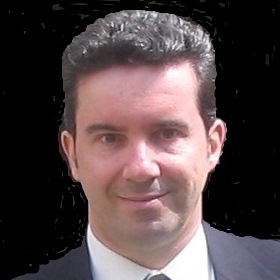 Affiliation Politecnico di Torino Title: Customer behaviour and data analytics Lecture Summary The development of a “customer centric” approach has found increasing interest in many sectors of our life. The customer is the key object of developing market-based strategies for attracting his/her interest towards purchasing new products or services. The electricity customer is part of this framework. Increasing attention has been and is being paid to the involvement of the customer side in the electricity business. Starting from the early mechanisms of demand side management, a growing involvement of the users has been introduced through interruptible load management, time of use tariffs, real time pricing, critical peak pricing, demand response mechanisms involving incentives, and demand bidding programmes. One of the keys of the present developments is enhancing flexibility for individual and aggregate loads, also resorting to better understanding of the collective behaviour of customer groups. The progresses in the definition of more refined mechanisms of involvement of the demand side also pass through the evolution of data analytics, enabling the gathering of knowledge from large amounts of data. The patterns of variation of the variables reflecting the customers’ behaviour have to be interpreted and analysed, trying to synthesise the underlying features and use these features to predict the expected trends on the basis of given external conditions. This paper addresses the emergent views representing the evolution of the participation of the customer side to the electrical business, also encompassing the role of producer-consumers (or prosumers) managing the local load together with local generation and storage. The prosumer’s control capability is a new aspect to be considered in the relation between energy provider and customer, as well as the definition of prosumers’ net load profiles, that may result in totally new shape of the demand patterns with respect to the classical ones and introduces higher sources of uncertainty in energy system analyses. Different aspects are reviewed, including the definition of metrics to assess demand flexibility from aggregate electrical demand, the prospect of innovative metering providing data to be processed at different levels of aggregation, the application of clustering algorithms and other types of machine learning with knowledge adapted from exogenous variables, the interactions among distribution system operators (DSOs), retailers and end users that are not directly DSO customers, the introduction of load shifting among different types of energy, the issue of grid defection for public utilities, the characterization of the strategies for enhancing the customers’ involvement in demand response initiatives and driving the customers’ preferences. Bio GIANFRANCO CHICCO graduated in Electrotechnics Engineering (honors) in 1987 at Politecnico di Torino (PdT), Italy, and obtained the Ph.D. in Electrotechnics Engineering in 1992. He is Professor of Electric Energy Systems at PdT (Energy Department). He has been the President of the University Academic Planning Council and the Coordinator of the Course Coordination Committee in Electrical Engineering at PdT. In 2003 he was a Member of the Administration Board of PdT. In April-May 1999 he has been a Visiting Assistant Professor at the University of Illinois at Urbana-Champaign, Electrical and Computer Engineering Department, Urbana, IL. He is a Senior Member of the IEEE Power and Energy Society, a Member of the Italian Federation of Electrotechnics, Electronics, Automation, Informatics and Telecommunications (AEIT), and a registered professional Engineer in the Province of Torino, Italy. He has been the scientific responsible and coordinator of projects on energy resource deployment and sustainability, and participated in several other projects funded by national and European grants, among which the most recent one, EU FP7 project SiNGULAR (Smart and Sustainable Insular Electricity Grids Under Large-Scale Renewable Integration), three-year project (December 2012 – November 2015): coordinator of the research unit at PdT. Since 2011 he is an Editorial Board member of Energy, the International journal (Elsevier, ISSN 0360-5442); since 2012 he is a Subject Editor of Energy for the subject “Integrated Heating, Cooling and Electricity Systems”. Since 2014 he has been an Associate Editor of the journal Sustainable Energy Grids and Networks - SEGAN (Elsevier) and since 2015 he is an Editor of SEGAN. He is also a peer-Reviewer of various international journals published by IEEE, IET, Elsevier, and others. Prof. António Cruz Serra 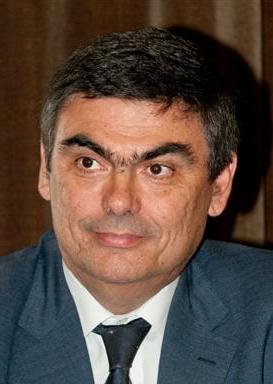 Affiliation University of Lisbon Title: Managing a Universities Merger Lecture summary The University of Lisbon is the largest and most recent university in Portugal, resulting from the merger of the former Technical University of Lisbon and the so-called ‘Classical’ University of Lisbon. Being recent, it is a university of the present and, especially, of the future and the frontline, driven by innovation in multiple areas of the sciences, technology, arts and humanities, and oriented towards both the city of Lisbon and the world at large. Like all major universities in the European tradition, the University of Lisbon anchors its mission on a long historical continuity, inherited from its predecessors, created in the early twentieth century and going back to eighteenth and nineteenth century institutions, in a genealogy line initiated in 1290, when the first Portuguese university was established in Lisbon. This historical continuity is reflected in a remarkable and vast cultural heritage of scientific, historical, architectural and artistic nature. The merger of the two former universities was a bottom up procedure decided by the academic community with the objective of building a comprehensive university, promoting interdisciplinary research where all fields of knowledge could work together after more than one century of separation. The first three years of management of the University after the merger, with its threats and opportunities, will be described in the presentation. Lisbon has always been a city open to the circulation of knowledge, techniques, people and objects from all over of the world, contributing significantly to the globalization of science and technology, of taste and aesthetics, of culture and, more generally, of this extraordinary and millennial adventure of accumulated knowledge about humans, nature and the universe. The material evidence of this adventure, so well symbolized by the open city of Lisbon, is present in the university, the place of knowledge by definition. It includes objects, people and ideas united in the past, present and future by curiosity, creativity, critical thinking, free spirit and imagination. The University of Lisbon will honour this tradition. Bio António Cruz Serra was born in Coimbra, Portugal, on December 17, 1956. He received the Electrotechnical Engineering diploma from the University of Oporto, Oporto, Portugal, in1978, and the M.S. and Ph.D. degrees in electrical and computer engineering from the Technical University of Lisbon (UTL), Lisbon, Portugal, in 1985 and 1992, respectively. Since 1978, he has been a Member of the Teaching and Research Staff with the Instituto Superior Técnico, University of Lisbon (ULisboa), where he is currently a Full Professor of instrumentation and measurement. Since 1994, he has been with the Instituto de Telecomunicações, ULisboa, where he is currently senior member of the instrumentation and measurement research line. His current research interests include electrical measurements, ADC modeling, testing and standardization and automatic measurement systems. Main University Management positions Rector of the University of Lisbon since July 2013, after the merge of the former University of Lisbon (Classical) with the Technical University of Lisbon. The University of Lisbon is the biggest University in Portugal, with a budget of 350 million Euros per year, 3,000 Professors, 3,500 administrative and technical staff and 50,000 students. Rector of Technical University of Lisbon from January 2012 to July 2013. President of Instituto Superior Técnico (IST) 2009-2012. President of Cluster (Consortium Linking Universities of Science and Technology for Education and Research) a consortium of 12 elite European Universities in Science, Engineering and Architecture from 2010-2012. President of the management board of Tagus Park SA, the biggest Science and Technology Park of Portugal from 2010-2015. Vice President of the Executive Board (CEO) of Instituto Superior Técnico, 2002-2008. President of ADIST (Associação para o Desenvolvimento do IST), 2009-2012. Vice-President (CEO) of ADIST (Associação para o Desenvolvimento do IST), 2002-2008. ADIST is a non-profit private institution hold by IST. With 300 employees, ADIST contributes to IST technology transfer for the benefit of the business community and society. President of IMEKO (the Instrumentation and Measurement Confederation), 2006-2009. He is the author of 220 scientific publications. Prof. Radu Bojoi  Affiliation Politecnico di Torino Title: Multiphase Electrical Machines and Drives - A Viable Solution for Energy Generation and Transportation Electrification Lecture summary A multiphase electrical machine is a machine having a number of phases that is higher than three. As the variable-speed drives are based today on power electronic converters, theoretically the machine’s number of phases is not limited any more to the grid number of phases. It is obvious that the increased number of phases inevitably leads to increased system complexity. However, for high power/high current applications, a multiphase drive possesses some advantages respect to their three-phase counterparts: decreased current per phase for the same power and rated phase voltage and inherent fault-tolerant capability due the redundant structure. Therefore, the multiphase drives represent a promising solution for safety-critical applications, such electrical ship propulsion, railway traction, Hybrid/Electrical Vehicles (HEV/EV), integrated battery chargers, More Electric Engine (MEE) and More Electric Aircraft (MEA) applications. Moreover, the additional “degrees of freedom” can be exploited for energy generation using multiphase generators in applications like wind generation. It is interesting to observe that the dawn of multiphase machines dates back to 1920s in the field of energy generation. In particular, to satisfy the demand for higher power generators, a three-phase machine was converted into a six-phase one to overcome the current limit imposed by the circuit breakers of that period. However, the development of multiphase solutions slowed sharply after the increase of the maximum allowable current of the circuit breakers. In the late 1960s, thanks to the important developments of the power electronics, multiphase motor drives started again to attract attention from the researchers. Nevertheless, multiphase solution developments were rather limited untill the mid-1990s, when their beneficial features had been exploited for electric ship propulsion. While marine applications have been a pioneer in the adoption of multiphase electrical machines and drives in the transportation applications, nowadays the whole transport sector is leading the way in the development of multiphase electrical drives. Although the literature reports many machine design solutions and control techniques for multiphase drives, the penetration of the multiphase solutions in transportation electrification and energy production is still too limited. For this reason, the paper contains a comprehensive analysis of the most promising multiphase solutions for transportation electrification and energy production, with the aim at providing a fair analysis on their advantages and disadvantages. Examples will be provided to emphasize the machine topology and the adopted control scheme. Bio Radu Bojoi (SM’10) received the M.Sc. degree in electrical engineering from the Technical University “Gh. Asachi,” Iasi, Romania, in 1993 and the Ph.D. degree from the Politecnico di Torino, Turin, Italy, in 2003. From 1994 to 1999, he was an Assistant Professor with the Department of Electrical Drives and Industrial Automation, Technical University of Iasi. In 2004, he joined the Department of Electrical Engineering, Politecnico di Torino, where he is currently an Associate Professor of electrical drives and power electronics. He has published more than 100 papers in international conference proceedings and technical journals. His scientific interests include the design and development of digital control systems in the fields of power electronics, electrical drives, and power-conditioning systems. He is an Associate Editor of the IEEE Transactions On Industry Applications and IEEE Transactions on Industrial Electronics. Prof. Bojoi is the secretary of the Electrical Machines Technical Committee of the Industrial Electronics Society.. Ionut Enculescu 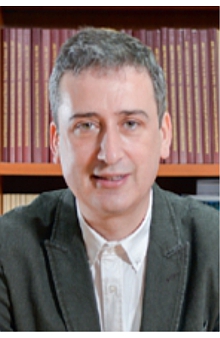 Affiliation: National Institute of Materials Physics, Magurele, Ilfov, Romania Title: Functional Nanostructures Lecture summary Nanostructures can be employed in a wide scale of applications ranging from electronics, information technology and communications to biosensors and medical devices. However in order to achieve functionality, complex algorithms are usually needed. First, high control of preparation conditions are necessary in order to tailor the size, shape, composition and structure of the nano-objects. As a function of the desired goal the next step is related to embedding the structures into complex devices by top down or bottom up methods each with its advantages. Finally a new step of functionalization may be necessary. The presentation will deal with presenting several paths of achieving functional devices based on nanostructures through both bottom up and top down methods. Devices such as field effect transistors or nanowire based diodes will be described but also examples of applications will be given. Bio Ionut Enculescu Received his Diploma in 1994 from the Faculty of Physics of the University of Bucharest. In 1995 he received an M.S. degree in Semiconductor Physics from the same Faculty with a work dealing with Organic Semiconductor based Field Effect Transistors. Since 1995 he worked at the National Institute of Materials Physics, starting as a Research Assistant. In the same year he started his PhD work in the field of piezoelectric crystals. He received his PhD title in 2001, the thesis’ title being “Intrinsic and Induced Defects in Quartz Crystals”. In 2001 he started a postdoc stage in GSI Darmstadt and then in Uppsala University in an FP 5 financed project Ion Track Technology Network. He returned to the National Institute of Materials Physics in 2004. In 2010 he became head of the Multifunctional Materials and Structures Laboratory and in 2012 General Director. He coauthored more than 100 scientific papers and managed numerous research and infrastructure projects. The most important one lead to the development of the Research Innovation and Technology Center for Advanced Materials. Dr. Hana Uršič 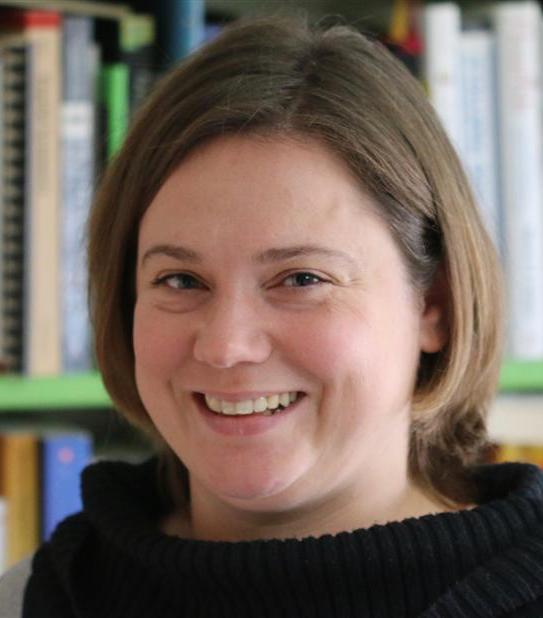 Affiliation: Jožef Stefan Institute, Ljubljana, Slovenia Title: Screen-printed thick films on alumina and low-temperature co-fired ceramic substrates for sensor applications Lecture summary The use of thick-film technology is attractive for the production of simple functional structures to more complex systems. The screen-printing method is due to its simplicity one of the most widely used thick-film deposition technique attractive for the production of simple structures or more complex systems. Commercial piezoelectric thick films are mostly based on Pb(Zr,Ti)O3. The commonly used substrates for functional ceramic thick films are silicon and alumina. However, the use of the low-temperature co-fired ceramic (LTCC) substrate, which densify at low temperature (~850 °C), enables the use of low cost conductive materials and fast firing regimes and is as such promising substrate material for the fabrication of three-dimensional ceramic structures or ceramic micro-electro-mechanical systems. The LTCCs are interesting for sensor applications due to lower Young’s modulus (90–110 GPa) in comparison to the one of alumina (210–410 GPa), which enables high sensitivity. In the contribution the functionalization of the LTCCs will be discussed. The compatibility of different metals, 0.65Pb(Mg1/3Nb2/3)O3–0.35PbTiO3 and PbZr0.53Ti0.47O3 thick films with LTCCs will be examined and the properties of structures will be compared to the ones on alumina substrates. The sensor applications of such multi-layered structures will be reviewed. Bio Dr. Hana Uršič received her B.Sc. in 2005 in physics at the Faculty of Mathematics and Physics, University of Ljubljana, Slovenia, and a Ph.D. in 2010 in Nanosciences and Nanotechnologies at Jožef Stefan International Postgraduate School in Ljubljana. She is currently a researcher in the Electronic Ceramics Department. Her main research interest covers electrical characteristics of thin and thick films, bulk ceramics and crystals. In 2010 she was a one-year- post-doc at Instituto de Ciencia de Materiales de Madrid (ICMM). She is author or a co-author of 45 articles in scientific journals, 4 book-chapters and 1 European patent application. EMC&EMB Workshop Keynote Speakers Prof. Alexandru Morega  Affiliation: Politehnica University of Bucharest, Romania Title: Convection Heat Transfer in Termographic Modeling Techniques Lecture summary Heat transfer in anatomic media occurs through combined conduction and convection mechanisms, to which the multiscale, counterflow system of arteries and veins – from large vessels to capillaries – participate to keeping the body within favorable thermal metabolic limits for variable environmental conditions. Beyond the diagnostic phase that may benefit of thermografic analysis, thermal medical procedures (hyperthermia, ablation), which are used to eliminate malformations, should rely on an as accurate as possible control to avoid the destruction of healthy tissues. The utilization of pre-interventional evaluation aims then to maximize the thermally produced effects (destruction of the targeted malformation), while minimizing the, again, thermally produced side effects (destruction of healthy tissue). It is then useful to have as precise as possible information on the localization and morphology of the targeted entity. Mathematical models that describe the heat transfer in vascularized media are needed then to develop virtual tools, which may support diagnosis, pre-operatory evaluation, and interventional control. Such models are commonly relying on simpler, homogenizing techniques that account for the convection part of the heat transfer on the average by assuming some blood perfusion rate and local thermal properties. Whereas this approach provides for realistic results in what concerns the overall energy balance, it may fail sometimes to accurately localize and evidence the specific morphology of degenerative formations, such as tumoral entities: using scale-inadequate assumptions and models may hinder the outlining heat transfer features, and lead to erroneous and misguiding results and diagnostic decisions. To address these concerns, several approaches may be used, ranging from homogenization techniques, to model tissues that are vascularized through capillaries, to more detailed techniques that account for the convection heat transfer through larger vessels and small vessels (capillaries). Bio Prof. Alexandru M. Morega (M’90, SM’2007, IEEE-EMB, IEEE-IAS, M’90 ASME) was born in Bucharest, Romania, in 1955. He received the B.E. and M.S. degrees in electrical engineering from the University POLITEHNICA of Bucharest, Romania (1980), the doctoral degree in electrical engineering from the University POLITEHNICA of Bucharest (1987), and the Ph.D. degree in mechanical engineering from Duke University of Durham, North Carolina, USA (1993). In 1983, he joined the Faculty of Electrical Engineering at the University POLITEHNICA of Bucharest as an Assistant Professor, and in 1998 he became Professor. He was the director of the Department of Bioengineering and Biotechnology (UPB, 2002-2012), one of the founders of the Faculty of Medical Engineering (UPB, 2012), and of the IEEE-EMB national chapter (2007). He is C.M. of the Romanian Academy, C.M. of the ASTR, Chair of the IEEE-EMB national chapter. His current research interests include electromagnetism, heat and mass transfer, field-substance interactions, energy conversion and sources, structural optimizations, multiphysics modeling. IEEE Distingueshed Lecturer 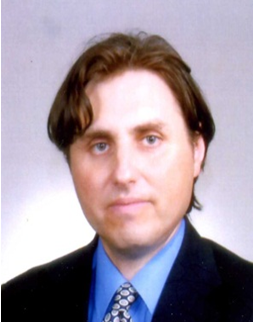 Affiliation: Institute of Telecommunication, University of Lisbon, Portugal Lecture summary Bio Prof. Dr. Octavian Adrian Postolache (M’99, SM’2006) graduated in Electrical Engineering at the Gh. Asachi Technical University of Iasi, Romania, in 1992 and he received the PhD degree in 1999 from the same university, and university habilitation in 2016 from Instituto Superior Tecnico, Universidade de Lisboa, Portugal. In the period 1992-2000 he worked as assistant and assistant professor at Technical University of Iasi. In 2000 he became principal researcher of Instituto de Telecomunicações where he is now Senior Researcher. He served as invited professor at EST/IPS Setubal, Portugal between 2001 and 2012 when he joined Instituto Universitario de Lisboa/ ISCTE-IUL Lisbon where he is currently Aux. Professor. His fields of interests are smart sensors for biomedical and environmental applications, pervasive sensing and computing, wireless sensor networks, signal processing with application in biomedical and telecommunications, non-destructive testing and diagnosis based on eddy currents smart sensors, computational intelligence with application in automated measurement systems. He was principal researcher of different projects including EHR-Physio regarding the implementation of Electronic Health Records for Physiotherapy and he is currently principal researcher of TailorPhy project Smart Sensors and Tailored Environments for Physiotheraphy.He served as technical principal researcher in projects such Crack Project related non-destructive testing of conductive materials. He is vice-director of Instituto de Telecomunicações/ISCTE-IUL delegation, director of PhD program Science and Communication Technologies at ISCTE-IUL, and he was leader of several collaboration projects between the Instituto de Telecomunicaçoes and the industry such as Home TeleCare project with Portuguese Telecommunication Agency for Innovation (PT Inovação), Integrated Spectrum Monitoring project with National Communication Agency (ANACOM). He is active member of national and international research teams involved in Portuguese and EU and International projects. Dr. Postolache is author and co-author of 9 patents, 4 books, 16 book chapters, 66 papers in international journals with peer review, more than 220 papers in proceedings of international conferences. He is IEEE Senior Member I&M Society, Distinguished Lecturer of IEEE IMS, chair of IEEE I&MSTC-13 Wireless and Telecomunications in Measurements, member of IEEEI&MSTC-17, IEEEI&MSTC-18, IEEE I&MS TC-25, IEEE EMBS Portugal Chapter and Chair of IEEE IMS Portugal Chapter. He is Associate Editor of IEEE Sensors Journal, and IEEE Transaction on Instrumentation and Measurements, he was general chair of IEEE MeMeA 2014, and TPC chair of ICST 2014, Liverpool and ICST 2015 in Aukland. He received IEEE best reviewer and the best associate editor in 2011 and 2013 and other awards related to his research activity in the field of smart sensing. |